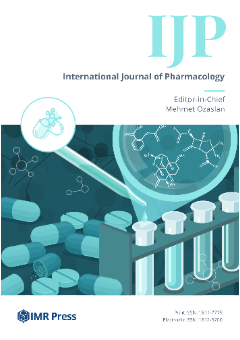International Journal of Pharmacology (IJP) is published by IMR Press from Volume 21 Issue 4 (2025). Previous articles were published by another publisher under the CC-BY licence, and they are hosted by IMR Press on imrpress.com as a courtesy and upon agreement.
Irradiated Honey and Medical Vaseline: A Comparative Study for Full-Thickness Burns on Rats in vivo
Background and Objective: Burns may lead to some psychological and physical problems, while several treatments such as silver sulfadiazine and sophisticated dressings, vaseline and honey have been approved as a medication. The current research aimed to study the morphological investigations of full-thickness burn healing impacts of irradiated honey and medical vaseline ointments. Materials and Methods: A total of 60 (3 months old) albino rats weighing 250-350 g b.wt., were divided into 6 sets of 10, including (1) vaseline set, (2) positive control set and (4 sets) treated with four honey types which coded as Nigella sativa honey (NSH), Moringa honey (MOH), sidr honey (SIH) and pumpkin honey (PUH), respectively. After the anesthetizing, the 2nd-degree burns were made on the animal's back and each set was treated topically twice a day. Several clinical evaluations were applied on the 1st, 5th, 10th and 15th days. Results: On the 15th day, the greatest granulation tissue rate was related to PUH, which reached 4.55. The MOH caused the lowest inflammation level 1.02 (the highest rate) compared to those sets PUH (0.99), SIH (0.87) and NSH (0.77). The highest wound secretion rate was detected for the treated rats with NSH (3.23), followed by PUH (3.21), SIH (3.18) and MOH (3.05), while the vaseline-treated rats reached (2.01) as the lowest rate. The highest dermal stuffiness rate was detected for the treated rats with SIH (3.22), followed by MOH (3.15), NSH (2.99) and PUH (2.23), while the vaseline-treated rats reached (2.03) as the lowest rate. The shrinkage rate was the highest in the treated rats with SIH (95.21), followed by PUH (92.39), MOH (89.22) and NSH (84.97). The MOH-treated rats reported the lowest tissue damage rate compared to vaseline-treated rats which detected some collagen deposited around circular muscle fibers in the inner muscular layer and reported 3.42. Conclusion: According to the morphological results, it is concluded that the traditional honey types as ointments are rich in therapeutic biomaterials and have many healing effects on burned skin.

